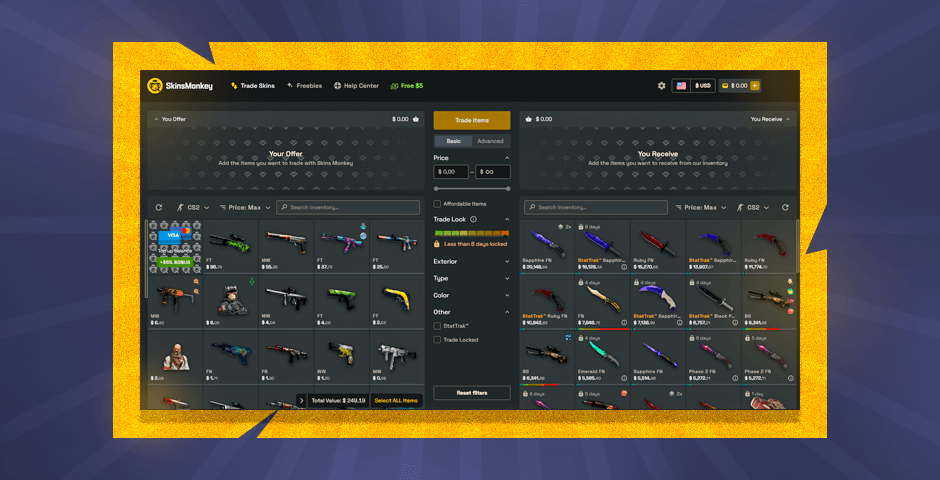The Ultimate Hookup Guide
Explore expert tips and advice on navigating the world of modern dating and hookups.
Trade Tales: Unmasking CS2 Item Histories
Discover the hidden stories behind CS2 items! Dive into Trade Tales for exclusive insights, rare finds, and the secrets of the trading community.
Understanding the Value: How CS2 Item Histories Influence Market Trade
In the ever-evolving landscape of CS2 (Counter-Strike 2), understanding the value attributed to in-game items is essential for both casual players and serious traders. One of the most critical aspects that influence this value is the item history. Each weapon, skin, or accessory comes with its unique item history, which includes past ownership, trade events, and market sales. By analyzing an item’s history, traders can assess its rarity and demand, which are key factors in determining market prices. This deep dive into the item histories allows players to make informed decisions, ultimately affecting how they approach trades and investments in the CS2 marketplace.
Moreover, the connection between item histories and market trade extends even further when players consider significant events, such as tournaments or updates, which can spike interest and inflate prices temporarily. For instance, an item that was once considered common might see its market value soar due to a sudden surge in popularity or a change in the game itself. Keeping a close eye on these trends through tools that track item histories can provide valuable insights for those looking to capitalize on market fluctuations. In summary, understanding how CS2 item histories influence market trade is vital for users aiming to navigate the complexities of trading effectively.

Counter-Strike is a popular first-person shooter game that combines strategy, teamwork, and skill. Players engage in intense multiplayer matches where they can choose to fight as terrorists or counter-terrorists. For those interested in trading in-game items, learning how to reverse trade cs2 can enhance their gaming experience.
The Evolution of CS2 Items: A Deep Dive into Trade Histories
The evolution of CS2 items has been nothing short of fascinating, reflecting both the game's progression and the preferences of its player base. From the early days of Counter-Strike, items were primarily utilitarian, designed to serve a practical purpose in gameplay. However, as the community grew and the competitive landscape shifted, so too did the approach to items. Players began to seek not just functionality but also aesthetics and rarity, leading to the introduction of skins and cosmetic enhancements that have transformed the economy of CS2 items dramatically.
One of the most compelling aspects of CS2 items is their trade history, which tells a story of market evolution and player interactions. As items gain or lose value over time, influenced by factors such as in-game events, trends, or the release of new content, players have increasingly utilized trading as a means to curate their inventories. This has fostered a vibrant marketplace, with users exploring various platforms to track the trade histories of their cherished items. Understanding these trade dynamics not only enriches the gaming experience but also highlights the interconnectedness of players within the CS2 community.
What Makes CS2 Item Histories Important for Gamers and Traders?
CS2 item histories are crucial for both gamers and traders as they provide a transparent record of the ownership and pricing trends of various in-game items. This historical data allows players to track the value of their items over time, enabling informed decisions when it comes to buying, selling, or trading. For instance, a player looking to acquire a rare skin can analyze the item history to identify trends and fluctuations in market prices, ensuring they get the best possible deal.
Moreover, the importance of CS2 item histories extends to the aspect of trust in trading. When gamers engage in community markets, the ability to reference a detailed item history can mitigate the risks of scams and fraudulent transactions. By reviewing an item's previous ownership and sales data, traders can confidently assess the legitimacy of both the item and the seller, fostering a safer trading environment. This transparency not only enhances the trading experience but also contributes to a more engaged and loyal gaming community.